20 Common Backyard Birds in North Carolina (With Pictures)
Last Updated on
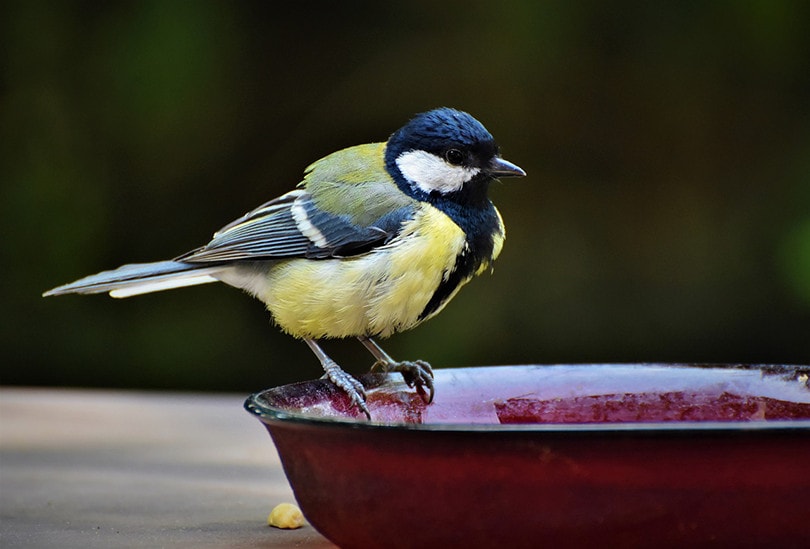
The terrain of North Carolina is composed of mountains, deciduous and coniferous forests, coastal wetlands, foothills, and sandy beaches. The state’s diverse landscape is attractive to humans, but avian species especially admire it. Whether you live in a suburb, city, or rural area, you’ll see several birds visit your property while foraging for food. We’ll discuss which birds frequently visit backyard feeders when you live in the Tar Heel State.
The 20 Most Common Backyard Birds in North Carolina
1. American Crow

| Length: | 15.8–20.9 inches |
| Wingspan: | 33.5–39.4 inches |
| Weight: | 11.2–21.9 ounces |
At nearly twice the size of a blue jay, the American crow dwarfs many of North Carolina’s backyard birds. It has all-black plumage, but when molting, the fallen feathers appear brown. Crows are omnivorous and enjoy foraging for invertebrates, insects, seeds, and garbage. They’re a common feature at backyard feeders, but they also visit garbage dumps, agricultural fields, parking lots, and forest areas. Crows are social creatures that fly in massive flocks of 1,000 birds or more. They form mobs to encourage raptors to leave their territory, but smaller birds sometimes bully them with larger numbers.
2. American Goldfinch
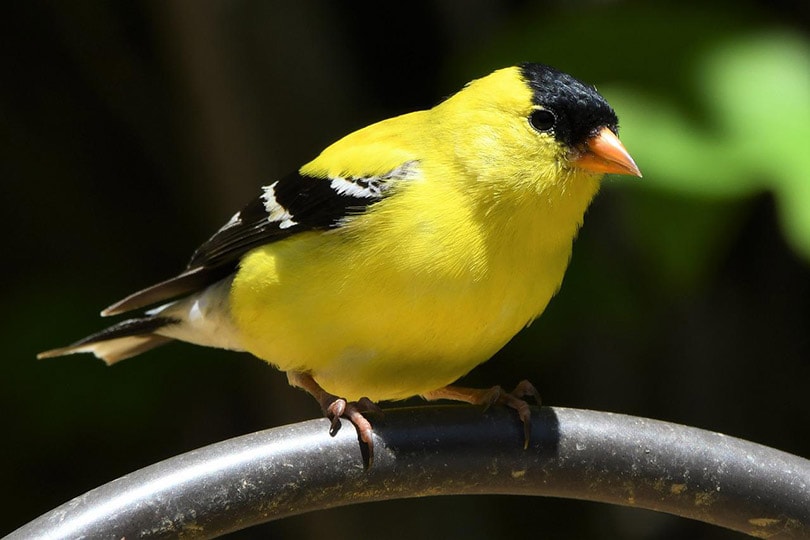
| Length: | 4.4–5.1 inches |
| Wingspan: | 7.8–8.7 inches |
| Weight: | 0.4–0.7 ounces |
The American Goldfinch is a tiny songbird that often makes calls when flying in flocks, and it’s a frequent visitor of backyard feeders in the winter. Males have bright yellow feathers and black heads, and females are duller yellow with olive patches on the head and shoulders. In winter, both sexes transition to drab brown feathers, and they’re more difficult to distinguish until the male’s feathers brighten in the summer. Goldfinches love eating thistle and asters in fields and floodplains, but they also enjoy visiting feeders in large groups. Although the birds have tiny beaks compared to other finches, they can open sunflowers easily and remove the outer shells.
3. Black-Eyed Junco
https://www.instagram.com/p/Cq52cxfr0sO/
| Length: | 5.5–6.3 inches |
| Wingspan: | 7.1–9.8 inches |
| Weight: | 0.6–1.1 ounces |
Black-eyed juncos are snowbirds that spend the spring in the woodlands of Canada but fly south to the United States and Canada for the winter. All black-eyed juncos have white outer tail feathers. The eastern juncos have slate-colored plumage, and western birds have light-brown feathers and dark-brown heads. Juncos forage for food on the ground beneath trees and shrubs, and they often congregate in backyards, fields, and parks. With a population estimated at 630 million, the black-eyed junco is one of the most abundant species in North America.
4. Blue Jay
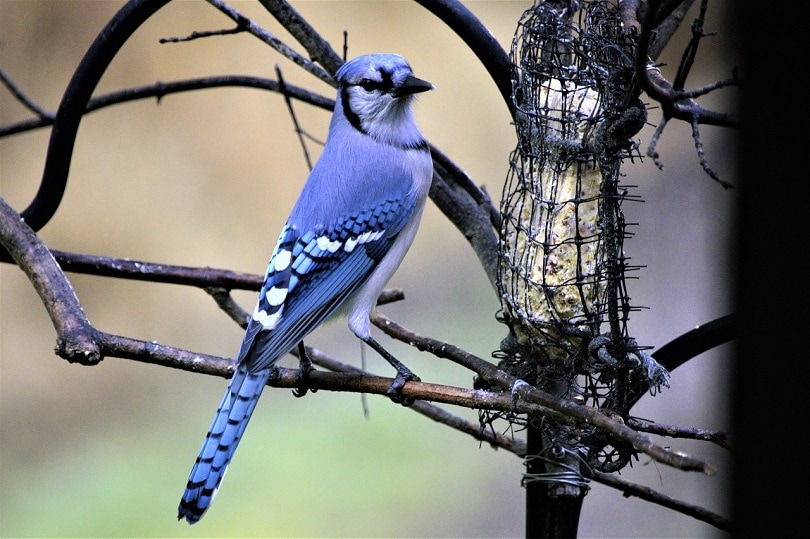
| Length: | 9.8–11.8 inches |
| Wingspan: | 13.4–16.9 inches |
| Weight: | 2.5–3.5 ounces |
Blue jays are admired North Carolina songbirds, and their impressive vocal ranges make them welcome visitors to any backyard. Unlike many birds, blue jays are difficult to identify by sex. Males and females look practically identical, and only a close inspection can help determine the gender. Blue jays are omnivorous birds that feed on insects, nuts, seeds, and fruit.
If a backyard feeder is located close to the bird’s nest, it often bullies the other songbirds away to minimize competition for food. Migratory patterns of blue jays have confounded researchers for several years; some birds fly south, but others stay in cooler climates all year. If you want to encourage visits from the musical blue bird, you can plant oak trees. The tree’s acorns are some of the bird’s favorite treats.
5. Carolina Chickadee
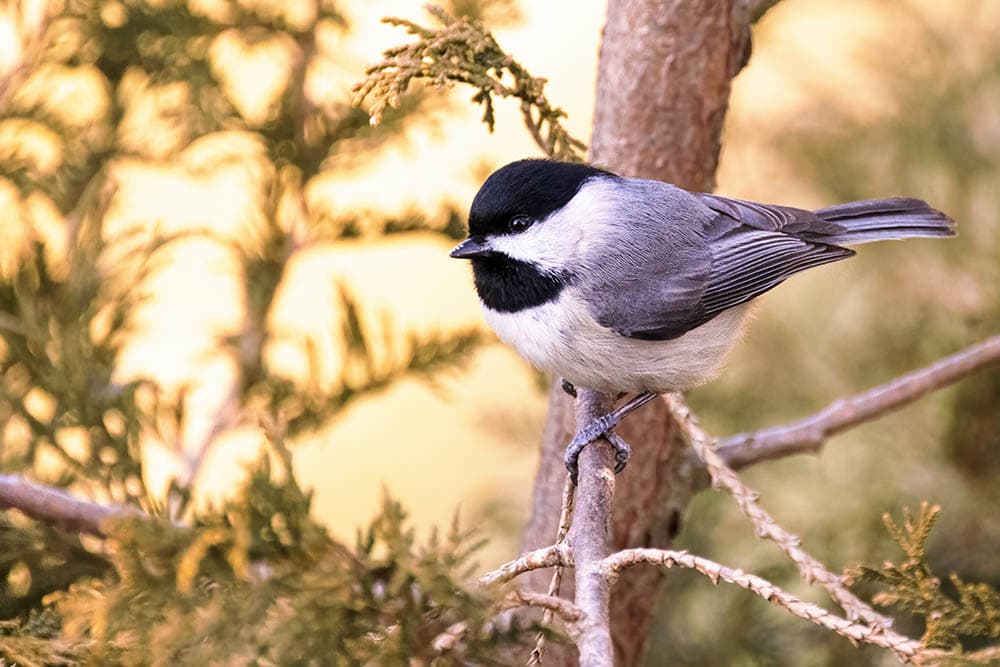
| Length: | 3.9–4.7 inches |
| Wingspan: | 5.9–7.9 inches |
| Weight: | 0.3–0.4 ounces |
In North Carolina and other southeastern regions, the Carolina chickadee sometimes crossbreeds with the similar black-capped chickadee when their ranges overlap. When this happens, the birds can imitate the other species’ calls and make it challenging for birdwatchers to distinguish the chickadees. Male and female Carolina chickadees have black heads with white streaks across the cheeks, dark gray feathers, and light gray breasts. They’re acrobatic birds that often hang upside down to grab fruit from the underside of branches, and you may see them hovering to feed on flying insects. At backyard feeders, Carolina chickadees prefer sunflower seeds and suet.
6. Carolina Wren

| Length: | 4.7–5.5 inches |
| Wingspan: | 11.4 inches |
| Weight: | 0.6–0.8 ounces |
Unlike many birds, Carolina wren parents stay together the entire year and often sing duets. The female makes a chattering rhythm, and the male sings over the notes with a melody. When mated pairs forage for food, they explore the underbrush in forests and look for insects like beetles, caterpillars, grasshoppers, crickets, and millipedes. In the winter, they rely on berries and seeds when insects are less available. Carolina wrens have reddish-brown plumage, tan breasts, and brown heads with white stripes above the eyes. If you want to see more wrens in your yard, you can hang suet and add peanuts to ground feeders.
7. Eastern Bluebird

| Length: | 6.3–8.3 inches |
| Wingspan: | 9.8–12.6 inches |
| Weight: | 1.0–1.1 ounces |
The Eastern bluebird is a year-round inhabitant of North Carolina, but its range stretches from Nicaragua to the northern United States. Males have brilliant blue feathers, red breasts, blue heads, and black beaks. The females have drabber colors but look similar to males. The bluebird population in the United States was declining in previous years until more homeowners installed bluebird houses to help with nesting and roosting. The birds form small flocks to forage in forest clearings, agricultural lands, and backyards when nesting season ends. Their diet primarily consists of insects and berries, but they’ve been spotted dining on tree frogs, snails, and small lizards.
8. Eastern Phoebe
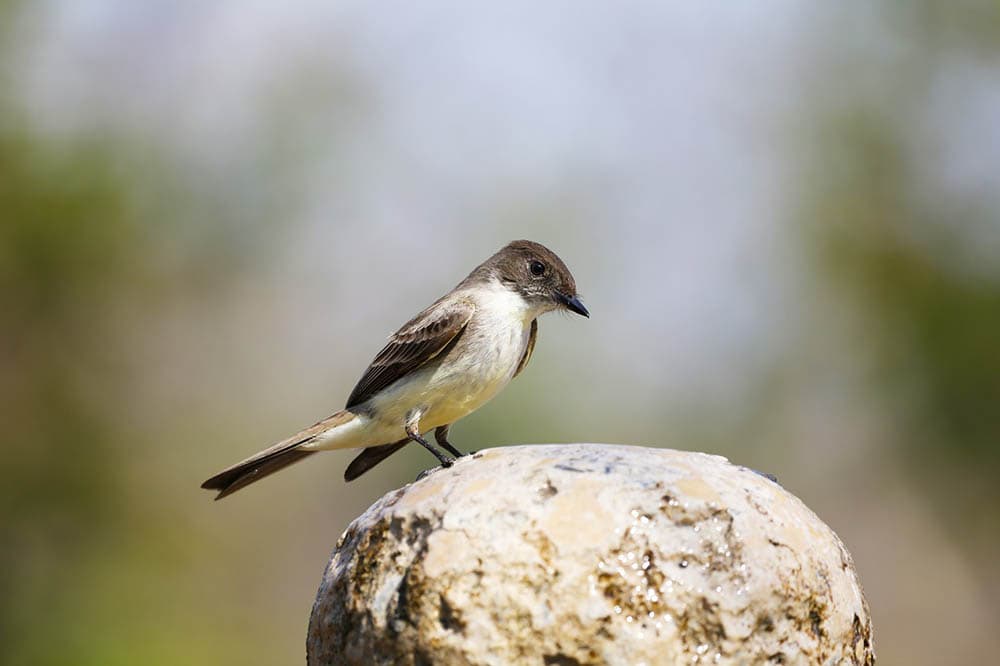
| Length: | 5.5–6.7 inches |
| Wingspan: | 10.2–11.0 inches |
| Weight: | 0.6–0.7 ounces |
The Eastern phoebe has dark gray or brown plumage with a lighter gray head and white breast. The bird’s thin black beak is adapted to catch flying insects, and phoebes enjoy feasting on bees, wasps, flies, true bugs, grasshoppers, ticks, millipedes, and spiders. In the winter, phoebes switch over to eating berries and small fruit. They’ve taken advantage of new construction in the southeastern United States by building nests under bridges, ditches, and barns. They often visit the same nesting site every year and build nests on top of the old ones.
9. Eastern Towhee

| Length: | 6.8–8.2 inches |
| Wingspan: | 7.9–11.0 inches |
| Weight: | 1.1–1.8 ounces |
If you hear a loud rustling coming from the tangled undergrowth near shrubs and trees, the racket is probably caused by the Eastern Towhee. The bird has black and speckled white plumage with a red and white breast, and although it’s only slightly larger than other sparrows, the towhee makes a lot of noise foraging insects, spiders, seeds, and berries. Males are incredibly aggressive to other species when they venture near the nests, but brown-headed cowbirds can fool female towhees by replacing one of the mother’s eggs with one of her own. Towhees cannot tell the difference between a cowbird and a towhee egg.
10. Hermit Thrush
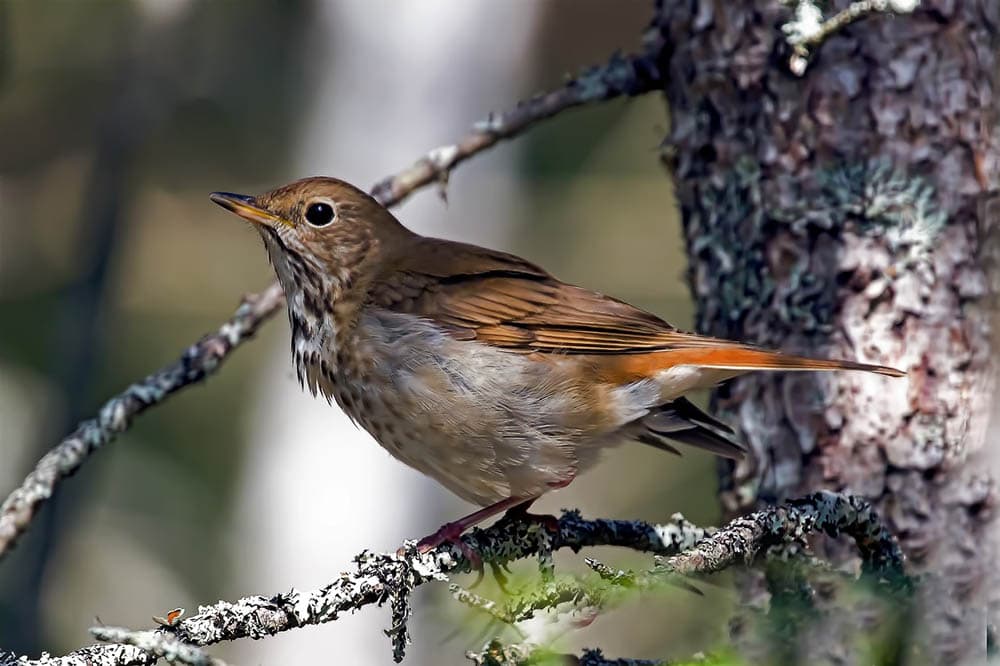
| Length: | 5.5–7.1 inches |
| Wingspan: | 9.8–11.4 inches |
| Weight: | 0.8–1.3 ounces |
Hermit thrushes spend the late spring and summer in cooler climates, but they’re one of the most abundant brown birds in North Carolina during the winter. The birds have brown feathers, speckled white breasts, and prominent red tails that flicker up and down when agitated. They hunt for food in trees, bushes, and leafy soil, and they mainly depend on insects but will also eat berries during the winter. Male thrushes typically defend their territories in the evening and early morning by singing melodies.
11. House Finch
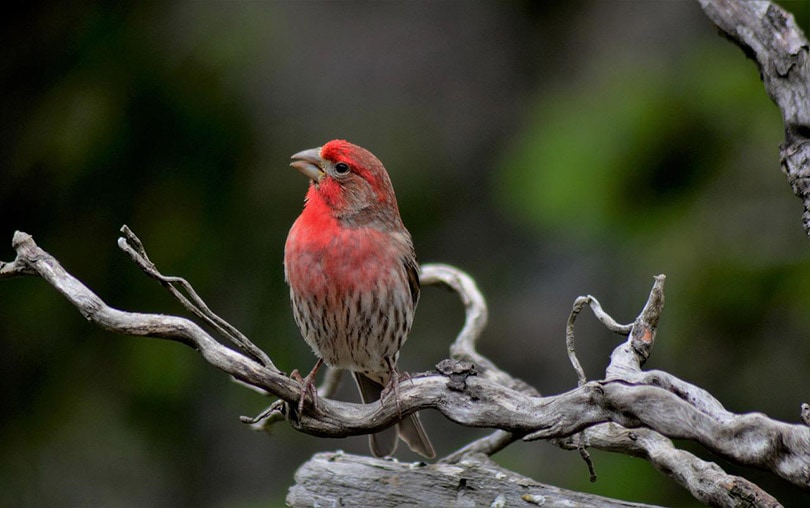
| Length: | 5.1–5.5 inches |
| Wingspan: | 7.9–9.8 inches |
| Weight: | 0.6–0.9 ounces |
Although the house finch is native to the southwestern United States, an eastern colony was established after pet finches were released from a pet store in Long Island, New York, in 1940. The pet store owners sold the birds illegally but let them go to avoid prosecution. Since then, the birds have made habitats across the southeast and Midwest. Males have red heads and breasts with black and white feathers, and females have dark gray feathers and heads. House finches dine on aphids, but they typically rely on berries and seeds from weeds for sustenance. Males sing all year, but females only sing in the spring.
12. Mourning Dove
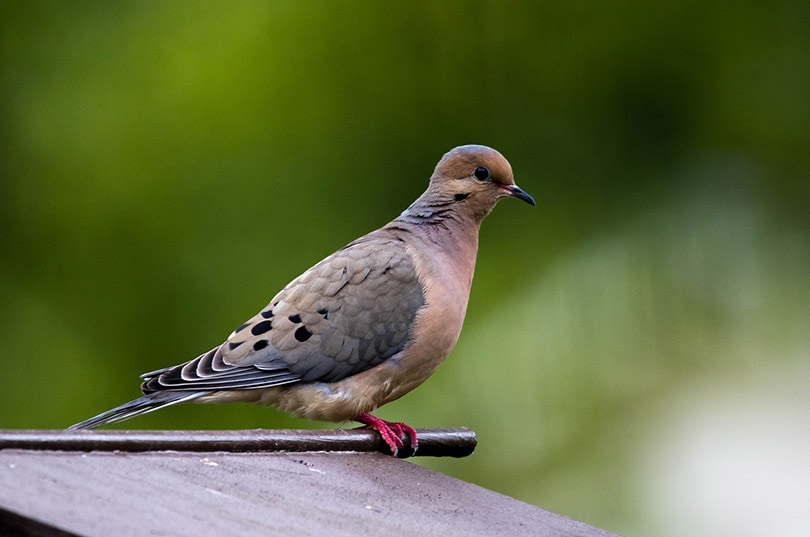
| Length: | 9.1–13.4 inches |
| Wingspan: | 17.7 inches |
| Weight: | 3–5.5 ounces |
Morning doves are hunted more than any game bird in North America, but they have a healthy population that stretches across the United States. Doves can adapt to nearly any environment, and they produce more offspring than other native birds. They can have six broods a year in North Carolina and other southern states, and they typically claim territories in open forest land, farms, suburbs, roadsides, and prairies. Mourning doves have gray and brown plumage with black accents and gray or tan breasts. They forage for seeds, ragweed, grasses, and an occasional snail, but over 99% of their diet is made up of seeds.
13. Northern Cardinal
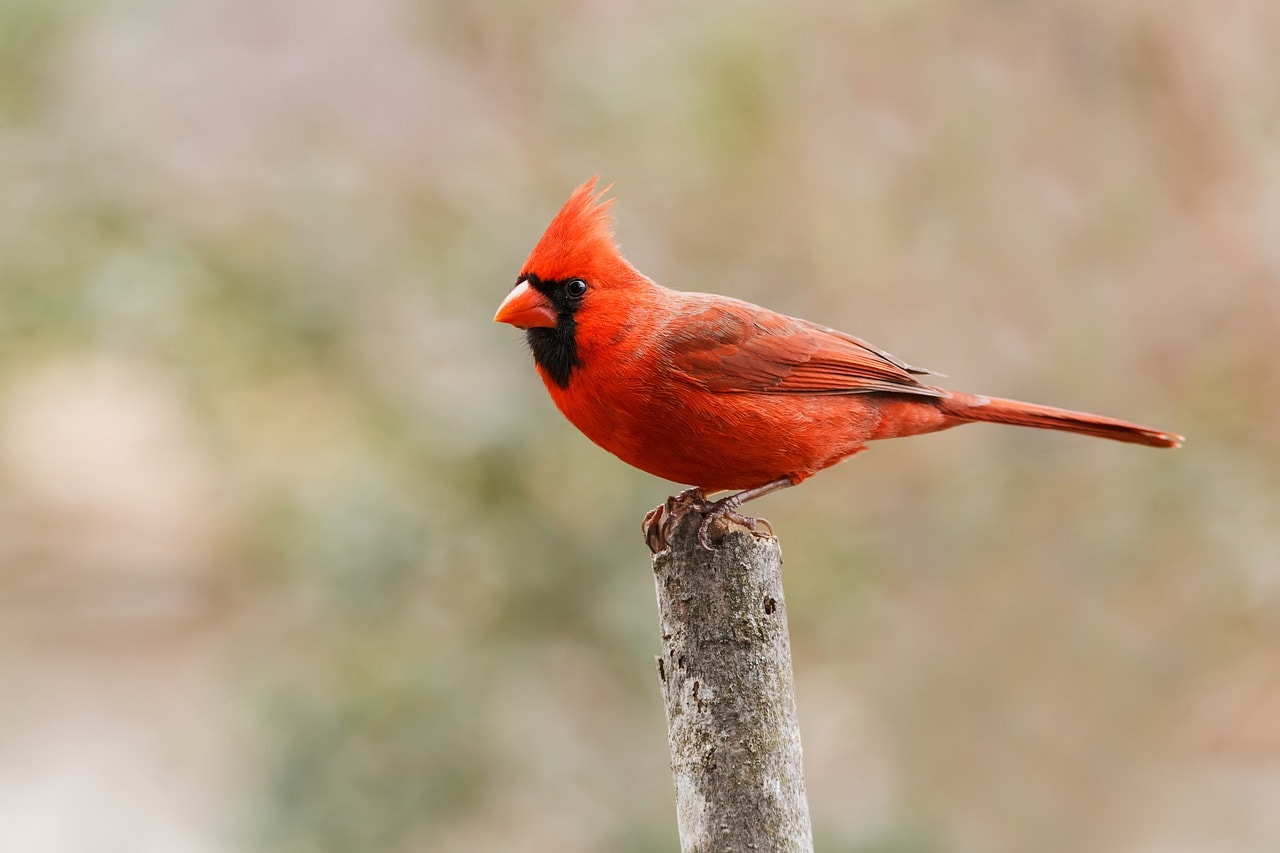
| Length: | 8.3–9.1 inches |
| Wingspan: | 9.8–12.2 inches |
| Weight: | 1.5–1.7 ounces |
Northern cardinals are familiar red birds in North Carolina, and since they do not migrate, you can enjoy their songs and vibrant colors all year. Males have brighter plumage, but the females’ duller red feathers still stand out amongst other songbirds. Cardinals prefer eating sunflowers in backyard feeders, but in woodland environments, the birds eat berries, grasshoppers, caterpillars, ants, and flies. Females often sing when they’re nesting and sing longer, more complex tunes than males. The cardinal is North Carolina’s state bird, and you may see them attacking a window in your house when it’s located near a nest.
14. Pileated Woodpecker
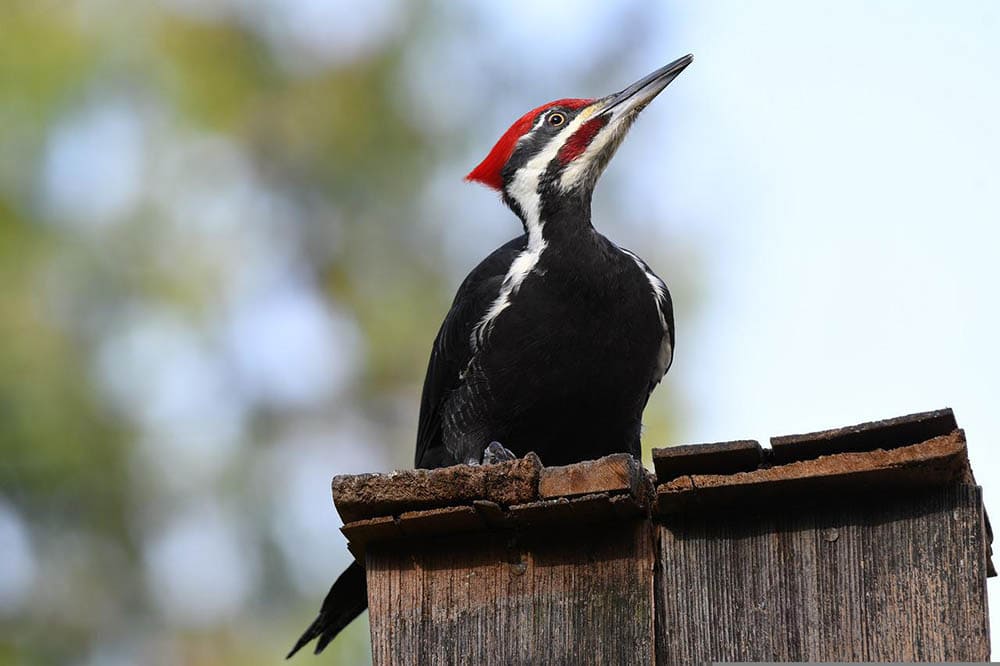
| Length: | 15.8–19.3 inches |
| Wingspan: | 26–29.5 inches |
| Weight: | 8.8–12.3 ounces |
With a body similar to a crow’s, the pileated woodpecker is one of North Carolina’s largest forest birds. It has a white and black-streaked face, red head, and black feathers. The pileated woodpecker uses its durable beak to pound into dead trees and remove carpenter ants. When it abandons a nesting hole, other species like ducks, bats, owls, and swifts use it for shelter. They do not eat most seeds from feeders, but some will pick from suet. If you have dying or fallen trees in your yard, you’re likely to see a woodpecker searching for ants.
15. Red-Bellied Woodpecker
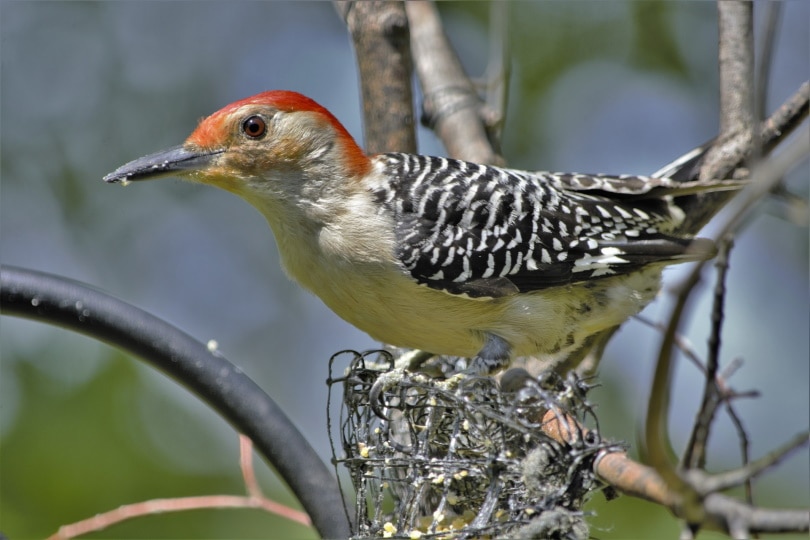
| Length: | 9.4 inches |
| Wingspan: | 13–16.5 inches |
| Weight: | 2–3.2 ounces |
The red-bellied woodpecker has black and white wings, a white face, and a red head, but its name is slightly misleading. The bird has a white upper breast with a small batch of red at the bottom. Although it consumes insects like the pileated woodpecker, the red-bellied bird also eats acorns, berries, seeds, tree frogs, and occasionally the eggs of other birds. In the southeast, the woodpeckers have two to three broods every year, but northern birds only have one brood. When the birds forage for food in the fall, they often hide nuts and berries in the bark of tree trunks.
16. Song Sparrow
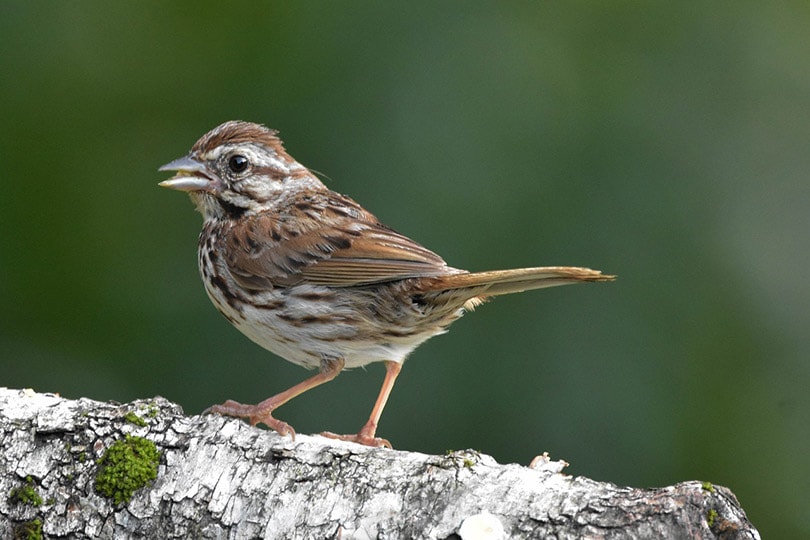
| Length: | 4.7–6.7 inches |
| Wingspan: | 7.1–9.4 inches |
| Weight: | 0.4–1.9 ounces |
Song sparrows are familiar sights in North Carolina’s backyards, but the birds have habitats across North America, and their color variation depends on the location. Eastern sparrows have red and gray feathers with white and brown speckled breasts, but the birds on the Pacific coast have darker plumage. The birds prefer areas with small trees and shrubs for cover, and they predominantly forage for insects, berries, and seeds on the ground and around the base of bushes. Sparrows in coastal regions of the state also eat mollusks and crustaceans. Like other species, the male song sparrow serenades potential mates with complex songs.
17. Tufted Titmouse

| Length: | 5.5–6.3 inches |
| Wingspan: | 7.9–10.2 inches |
| Weight: | 0.6–0.9 ounces |
The tufted titmouse is native to the southeast, but the species has been pushing further north in recent years. The birds have blue and gray feathers, white breasts with orange highlights, and blue heads with a black spot above the bill. The titmouse relies on bugs during the summer but feasts on berries and seeds at other times. When the bird can access backyard feeders, it carries one seed at a time back to a hiding place near the nest. Mating pairs stay together all year, and some parents rely on a juvenile from a previous brood to help raise the offspring. The bird makes a recognizable call that sounds like it’s singing, “peter, peter.”
18. White-Throated Sparrow

| Length: | 6.3–7.1 inches |
| Wingspan: | 7.9–9.1 inches |
| Weight: | 0.8–1.1 ounces |
White-throated sparrows breed in the north during the spring and spend winter in the southeastern states. The birds have primarily gray and dark brown feathers, but their heads are black, white, and gray, with a spot of orange near the front of the eyes. Some adults have different head stripe patterns, and researchers have found slight behavioral differences in birds with white or tan stripes. Tan-striped males are not as aggressive as the white-striped variety. The sparrows eat wasps, damselflies, caterpillars, and spiders in warmer months and depend on seeds and berries in the fall and winter. If you want to install a bird feeder to attract the white-throated sparrow, place it next to a hedge of shrubs.
19. Wood Thrush
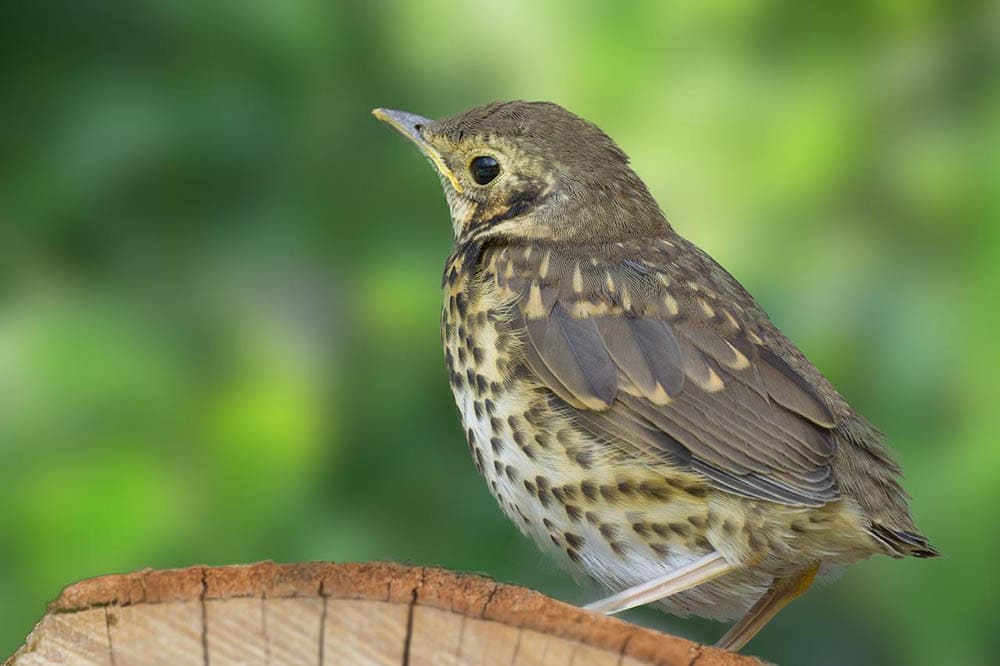
| Length: | 7.5–8.3 inches |
| Wingspan: | 11.8–13.4 inches |
| Weight: | 1.4–1.8 ounces |
Wood thrushes stay in the southeast all year, but they prefer damp woodland areas and suburban regions with tall trees. They have tan wings, white and black-speckled breasts, tan heads, and gray and white faces. During mating season, the wood thrush feeds primarily on insects like ants and crickets and enjoys nuts and berries. Its cheerful songs have been compared to flute music, and males defend their nest with their songs. In recent years, the wood thrush population has significantly decreased. It has fewer breeding grounds in the tropics, and cowbirds have ruined several wood thrush broods by replacing eggs with their own.
20. Yellow-Bellied Sapsucker

| Length: | 7.1–8.7 inches |
| Wingspan: | 13.4–15.8 inches |
| Weight: | 1.5–1.9 ounces |
Although its numbers have declined in the southeast, the yellow-bellied sapsucker can still be seen in the winter in North Carolina. It has white and black streaks on its face that continue down to its wings and a red head like other woodpeckers, but it’s much smaller than other species in its family. The yellow-bellied sapsucker has a speckled gray and brown breast rather than a yellow one, but the last part of its name is more descriptive. The bird loves drilling for sap in trees, and it often makes several holes in a row and returns later to eat the dripping liquid. Sapsuckers also eat fruit, nuts, insects, and berries.

In Conclusion
When you live in a state with abundant forests, agricultural lands, and a comfortable climate like North Carolina, you have many opportunities to view gorgeous birds in your backyard. Some species are only seasonal visitors, but you’ll see several birds all year. Keeping your bird feeders and birdbaths cleaned and fully stocked will encourage more species to visit your home. If you’re lucky, you’ll see a rare species taking a break from a long migratory journey.
Featured Image Credit: Ralphs_Fotos, Pixabay
Table of Contents
- The 20 Most Common Backyard Birds in North Carolina
- 1. American Crow
- 2. American Goldfinch
- 3. Black-Eyed Junco
- 4. Blue Jay
- 5. Carolina Chickadee
- 6. Carolina Wren
- 7. Eastern Bluebird
- 8. Eastern Phoebe
- 9. Eastern Towhee
- 10. Hermit Thrush
- 11. House Finch
- 12. Mourning Dove
- 13. Northern Cardinal
- 14. Pileated Woodpecker
- 15. Red-Bellied Woodpecker
- 16. Song Sparrow
- 17. Tufted Titmouse
- 18. White-Throated Sparrow
- 19. Wood Thrush
- 20. Yellow-Bellied Sapsucker
- In Conclusion
About the Author Robert Sparks
Robert’s obsession with all things optical started early in life, when his optician father would bring home prototypes for Robert to play with. Nowadays, Robert is dedicated to helping others find the right optics for their needs. His hobbies include astronomy, astrophysics, and model building. Originally from Newark, NJ, he resides in Santa Fe, New Mexico, where the nighttime skies are filled with glittering stars.
Related Articles:
Monocular vs Telescope: Differences Explained (With Pictures)
10 Types of Hummingbirds in Arkansas (With Pictures)
8 Types of Hummingbirds in Nebraska (With Pictures)
5 Types of Hummingbirds in Idaho (With Pictures)
3 Types of Hummingbirds in Mississippi (With Pictures)
8 Types of Hummingbirds in Kansas (With Pictures)
5 Types of Hummingbirds in West Virginia (With Pictures)
5 Types of Hummingbirds in Ohio (With Pictures)
